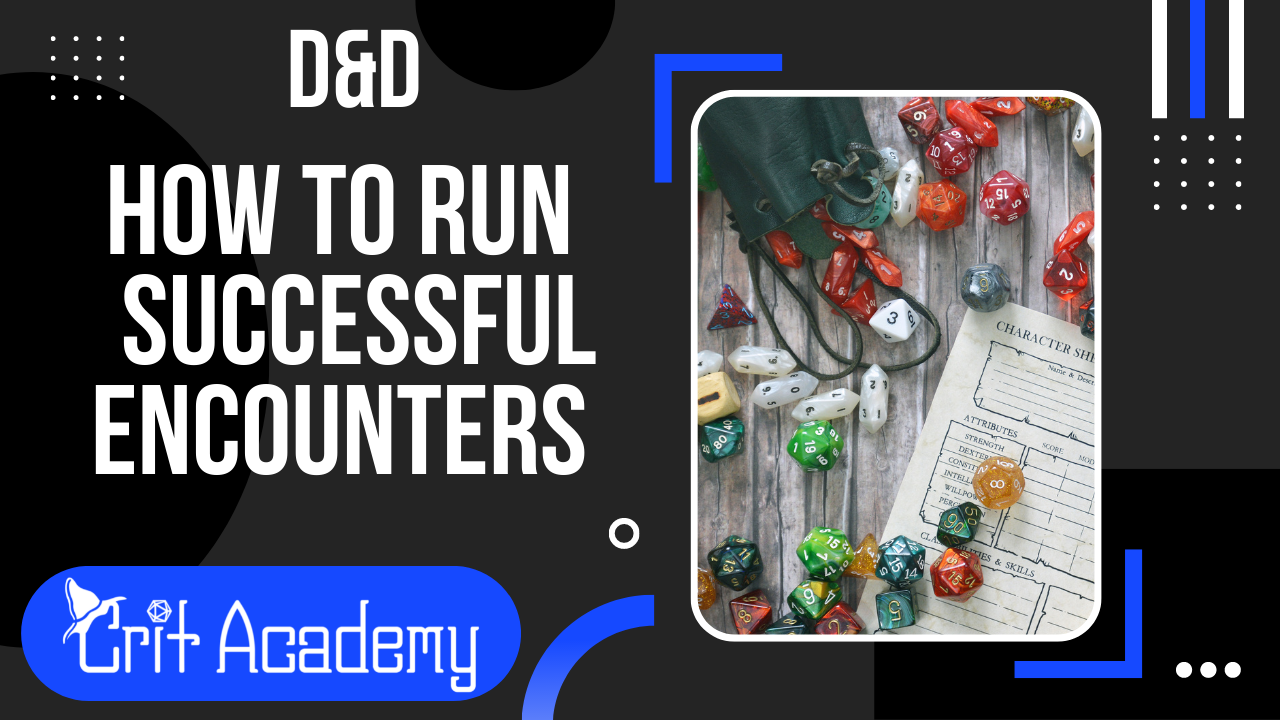D&D Advice: How to Run a Successful Encounter in Dungeons and Dragons
Running a successful Dungeons and Dragons 5e encounter is all about preparation. If you take the time to prepare, your players will have a much more enjoyable experience. Here are four tips to help you prepare for your next D&D encounter.
1. Know Your Players
The first step in preparing for a successful D&D encounter is to know your players. If you don't know what sort of things they like or don't like, it will be much harder to craft an encounter that they will enjoy. Pay attention to the sorts of things they say during the game and try to incorporate those things into your encounters. If you know one of your players loves puzzles, for example, try to include a puzzle in your next encounter. What’s great about this, is that they can all be done together. During combat you can easily include a puzzle that one player must solve during the battle. Putting a round limit can even push the tension in the game and make the characters all feel engaged. Whether they are slaying monsters, or solving the puzzle.
2. Know Your NPCs
Just as important as knowing your players is knowing your NPCs. If you're running an evil campaign, make sure you know how evil your NPCs are. You don't want them to be too evil, or the players will get frustrated, but you also don't want them to be too good, or the players will get bored. Find that perfect balance and your players will thank you for it. It is my experience that the best enemies are the ones that have very understandable motivations. This gives the encounter with them far more depth, especially when the characters and their players can almost agree with them. A great example is Mr. Freeze in the horrible Batman and Robin flick. Mr. Freeze is a doctor stealing and looting all so he can afford to buy the materials he needs to cure his dying wife.
3. Know Your Environment
Another important thing to keep in mind when preparing for a successful D&D encounter is the environment. Is it a forest? A Cave? A Mansion? Knowing the environment will help you set the scene and make it more believable for the players. It will also help you determine what sorts of creatures might be lurking around, which can be helpful when deciding what sort of encounter to run. This is great because it also helps us decide on the types of threats that exist in the environment. A battle in a swampy mire with sludge knee deep is going to have a strong contrast to fighting in an icy cave where every movement could drop a character on their rump.
4. Make use of Terrain
Terrain can be a very important part of an encounter. It can provide cover for characters, create obstacles to overcome, or even trap unsuspecting victims. When used effectively, terrain can make an encounter much more dynamic and exciting. So when designing your encounters, be sure to take advantage of the terrain around you. A battle in a slick icy cavern with stalactites on the ceiling that can be dropped down onto unsuspecting characters is great. We can further use that dropped icy stalactite as cover from battle now too. Having your monsters utilize the terrain can help engage the characters in a fun way. It might just make the difference between a boring encounter and a memorable one.
5. Set the stakes
The next step is to set the stakes. What’s at stake in this encounter? Are the players just trying to get through the room without getting hurt? Or are they trying to defeat an enemy before they successfully open a portal to a dark world. Perhaps they need to solve a puzzle to enter a vault? What are the risks of failure and the rewards of success? Solving a puzzle to stop the stream of water filling a room is a clear danger. How about stopping a raging fire in a small village before it burns down? Make sure the stakes are clear so that the players know what they need to prioritize in order to obtain success.
6. Plan Ahead
Finally, the most important tip for running a successful D&D encounter is to plan ahead. This doesn't mean you have to plan out every single detail of the encounter, but you should at least have a general idea of what's going to happen before the game starts. That way, if something goes differently than you planned, you'll be able to improvise and keep the game moving along smoothly. A great way to do this is to use simple bullet points with potential branches the characters might take. A small outline like this can be a lifesaver when it comes to game pacing and engagement.
By following these four tips, you'll be well on your way to running a successful Dungeons and Dragons 5th edition encounter. Just remember to always keep your players in mind and plan ahead as much as possible. With a little preparation, your next D&D encounter will be one for the ages!
Thank you for reading our blog. If you enjoy the content and want to support us, visit our store or follow us on social media, join us on discord, youtube, and leave us a review.



